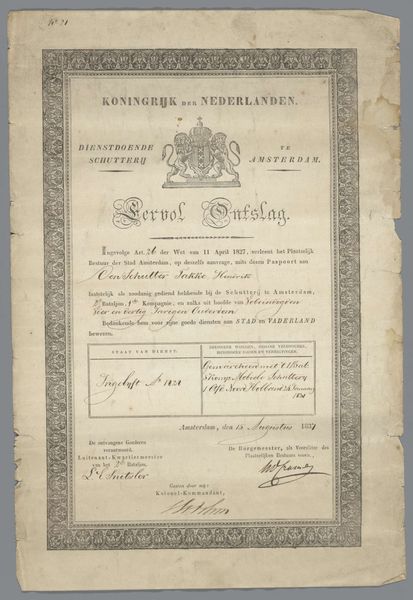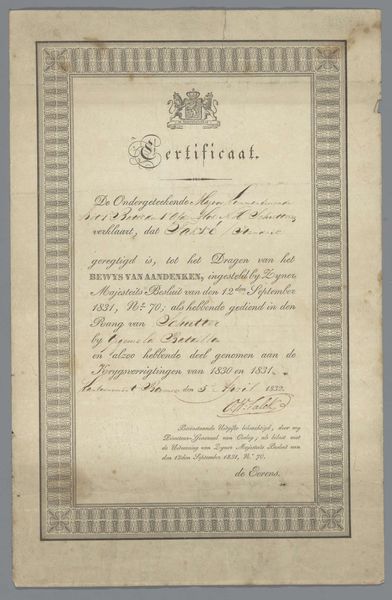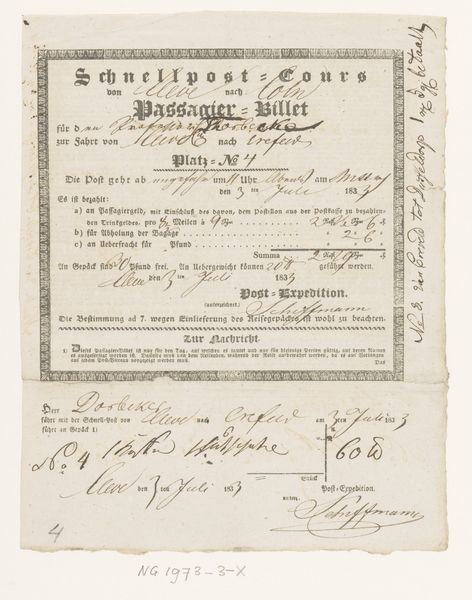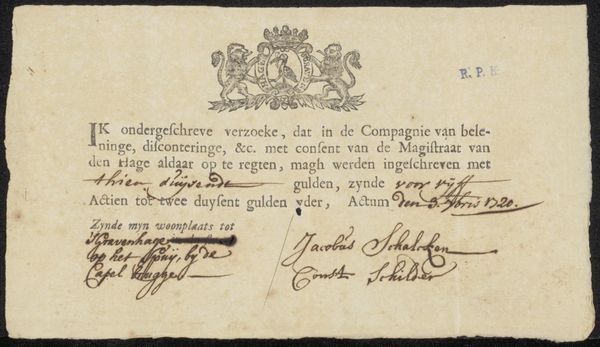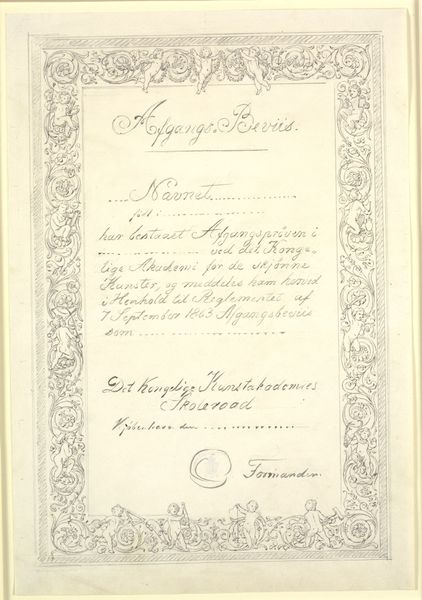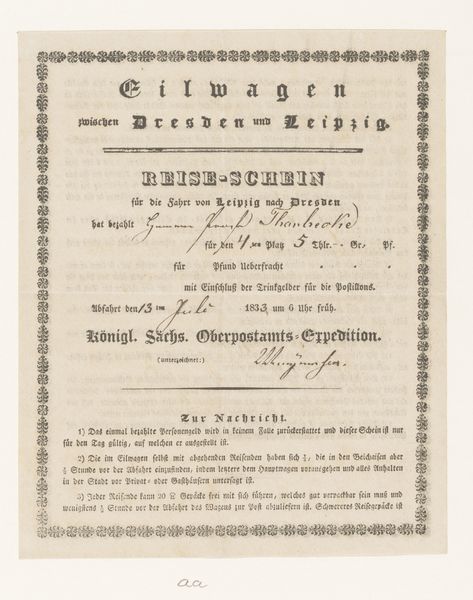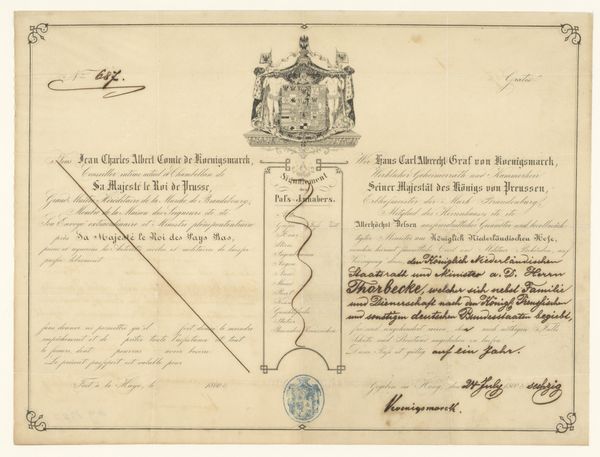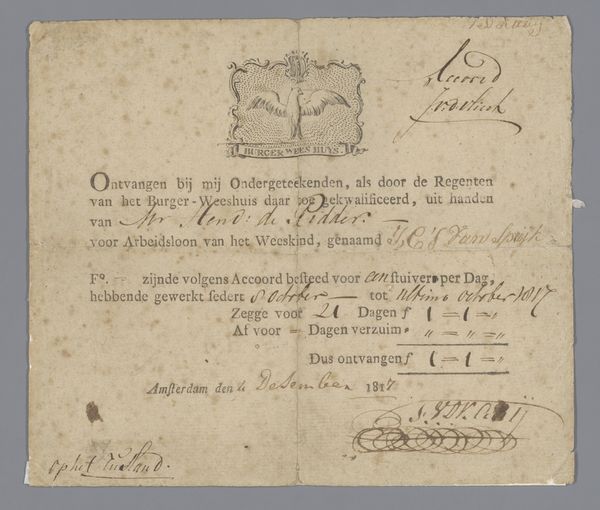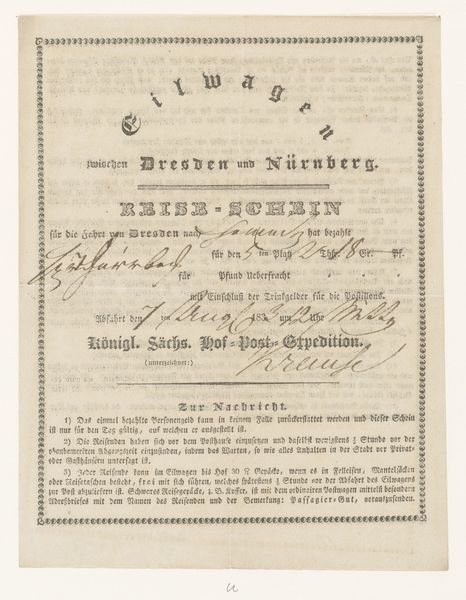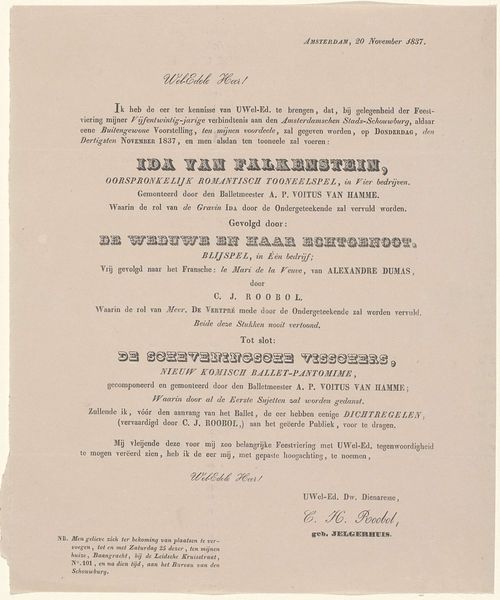
drawing, print, paper, ink
#
portrait
#
drawing
#
aged paper
#
toned paper
#
homemade paper
#
parchment
# print
#
paper
#
tea stained
#
ink
#
fading type
#
genre-painting
#
history-painting
#
golden font
#
academic-art
#
watercolor
#
historical font
#
columned text
Dimensions: length 35.1 cm, width 23.2 cm
Copyright: Rijks Museum: Open Domain
Curator: Here we have "Bewijs van ontslag" – or "Proof of Discharge" – by G.L. Lepeltak, possibly dating from 1825 to 1829. It appears to be a printed document with ink additions. Editor: It certainly has a feel of age. The toning of the paper and fading of the type suggest a physical object with a rich history. Curator: The overall structure is quite formal, wouldn’t you say? A carefully delineated border, a prominent coat of arms at the top, and meticulously organized columns of text give it an air of officialdom. Semiotically, we could view the framing as a boundary establishing authority and validity. Editor: Yes, but also control. Looking at the material reality, this document isn’t simply about an individual’s release. It is a carefully crafted object made to carry official weight using readily available means. This kind of printed paper made these records easier to process and distribute. How many similar papers might have existed, charting lives through military service? Curator: The visual language of the historical font evokes a specific time and place, reinforcing a sense of heritage. The "golden font" ai tag hints at an aspirational, almost idealized portrayal of duty. Editor: But the tea stains and what look like watermarks remind us of the unpredictable lives these documents experienced outside pristine archives. These papers are the physical output of specific modes of governance and military structuring of society. Each mark signifies how social conditions transformed the paper. Curator: That's true; these aging marks provide a certain character. So, considering its construction, the symmetrical elements communicate order and legality, whilst the imperfections tell us much about the impact of history on everyday existence. Editor: Exactly. "Proof of Discharge" invites us to think not only about individual cases, but about the structures of power and modes of communication and consumption involved in its creation, dissemination and endurance. Curator: It’s remarkable how a seemingly simple piece of paper encapsulates such rich meaning through both its design and material presence. Editor: A testament to art as process and the layering of significance.
Comments
No comments
Be the first to comment and join the conversation on the ultimate creative platform.
